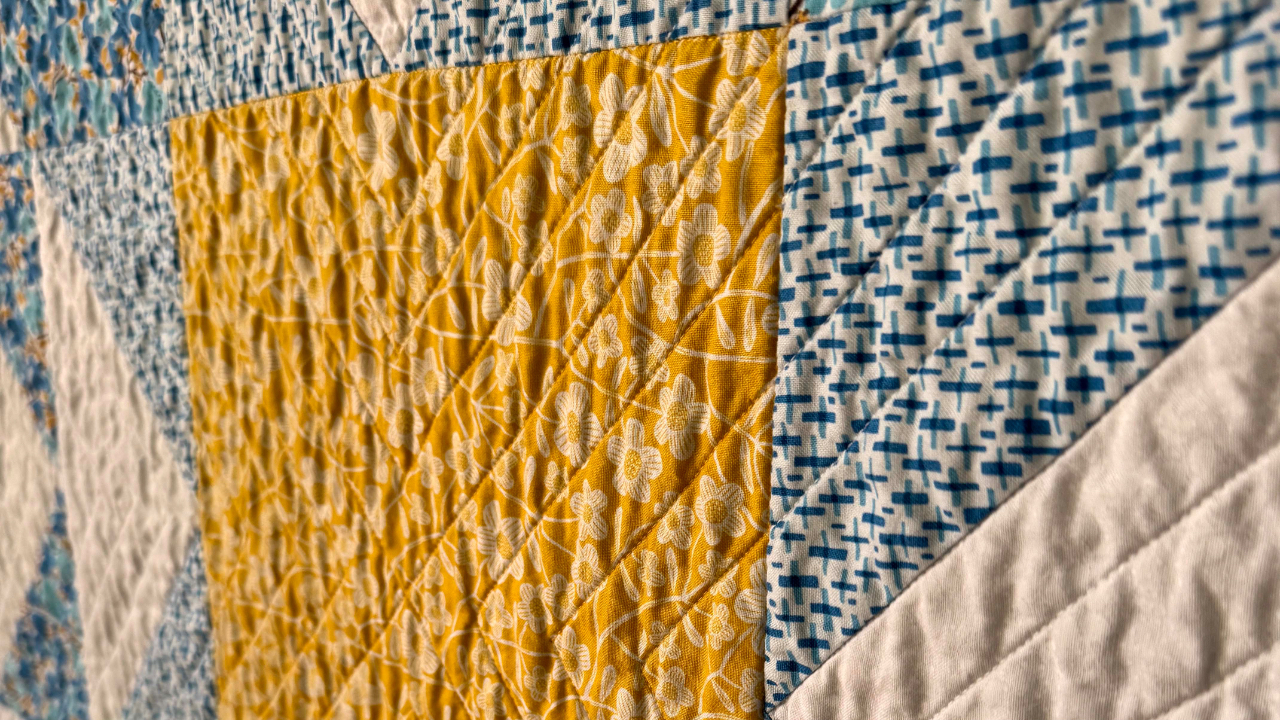
A few weeks ago, I was trying to finish my some quilt tops so I could have a weekend baste-a-thon. Quilting the quilt is my favorite step, so I like to build up a small pile before basting so I always have something fun to work on. One of those tops was my wall hanging for Alison Glass' Trinket sew along. I had seen reels of people web piecing here and there on the Gram, so I decided to give it a try. I wanted to share how it went for me and give you some thoughts on how I might do it again in the future.
What is Web Piecing?
As simply as I can think to define it, web piecing is chain piecing on steroids. Instead of clipping threads and pressing after each thread, you just keep adding pieces to each row. At the end, your quilt looks a little like a spider web.

Sewing & Pressing the Rows
The next step is to fold your rows onto each other while they're still attached and sew them together. Repeat this step for all the rows. The tricky part here is making sure you're finger pressing your seams in the right direction, alternating with each row. My brain can be extra special at times, so I went pretty slow during this step just to make sure I wasn't going to have any twisted seams when I went to press the top at the end. It was made trickier because I was piecing pieced blocks that had their own seams so I had to really think about it at times!
Here's what the back looks like when you're done sewing the rows together:

Now it's time to press your blocks and those long row seams. I'm not going to lie, pressing these row seams while not messing up my existing seams was pretty challenging. But after some diligent work, I was pretty happy with how it turned out.

Would I do it again?
Short answer: absolutely yes! It was a lot easier than trying to sew my rows in pairs, think about pressing direction every time I went to the iron, and then lining everything back up on the design wall to do it all over again. A quilt like this with a ton of foundation paper pieced blocks was probably not the project for this technique though. I really had to manage a lot more seams than I wanted to during the pressing process. However, I think this technique would be perfect for a checkerboard-style pattern, like a plus quilt.
I'm already looking through my pattern library to see if I already have something on hand to try this technique with, so I guess you could say I'm in! Have you tried web piecing before? How did it go for you? Let me know in the comments.






